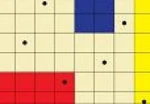In this post you can find a Matlab code for constructing digital nets on which was recently proposed in J. Dick, Quasi-Monte Carlo numerical integration on
: digital nets and worst-case error. Submitted, 2010. See the previous post where an explanation of the method and a link to the paper can be found. In the numerical example we consider a simple three-dimensional integral. In this example the computation time with the new method is reduced by a factor of ten and additionally the integration error is also reduced. The numerical result in the paper shows that, for the example considered there, that the computation time can be reduced from two and a half minutes to less than two seconds for a certain given error level. Continue reading
Search
Categories
Archives
Subscribe to feed
-
Join 38 other subscribers
Conferences
Diversions
Misc
Tags
best approximation lemma bounded variation Cauchy Schwarz inequality completely uniformly distributed complete orthonormal system continuous convergence differentiable differential Differential form digital net Dirichlet kernel discrepancy theory Divergence theorem Duality Theory for Digital Nets even function fast component by component Fejér kernel Fourier series Fourier series applet Fourier series applications Fourier series background Fourier series examples fundamental theorem of line integrals Gibbs sampler Green's theorem Green's theorem in normal form Green's theorem in tangential form heat equation Higher order digital net higher order digital sequence higher order polynomial lattice rule higher order Sobol sequence ICIAM 2011 Korobov space lattice rule limit line integral L_2 space Markov chain Monte Carlo mean square convergence mean square convergence of Fourier series multiple lightswitches Norm numerical integration numerical integration over R^s odd function one sided limit orientation of curve Parseval's identity periodic functions piecewise continuous piecewise differentiable polynomial lattice rule Propagation Rule pseudo random numbers Pythagorean theorem quasi-Monte Carlo randomised quasi-Monte Carlo scalar line integral sequence of functions Several Variable Calculus slice sampler Sobol sequence Stokes Theorem Surface integrals tiling tractability triangle inequality trigonometric polynomial variation vector field Walsh function Walsh model Weierstrass testRecent Comments
Pages
Meta


